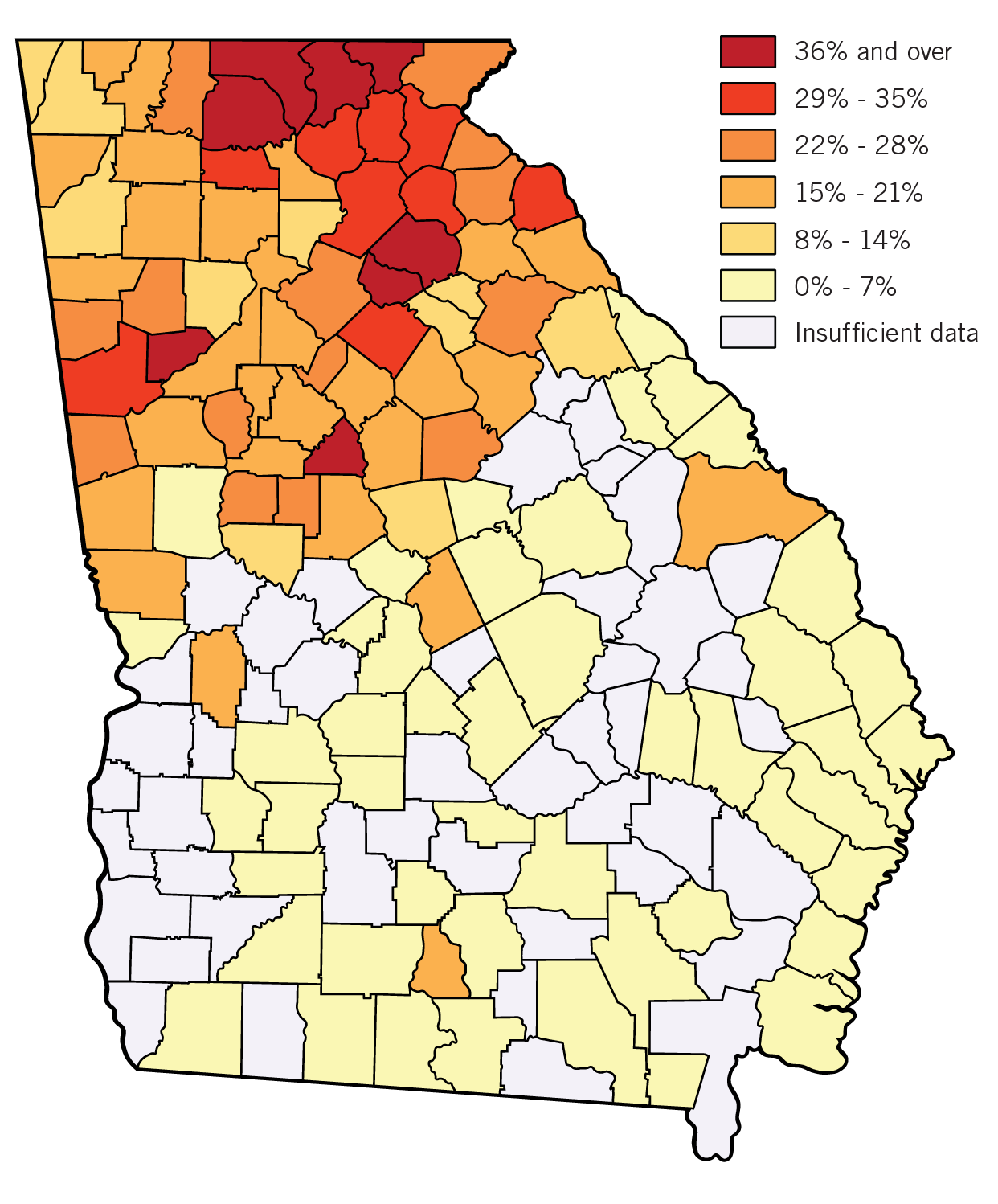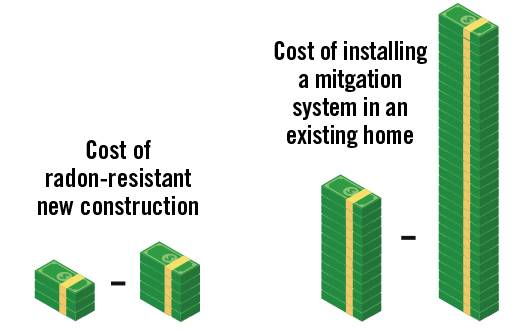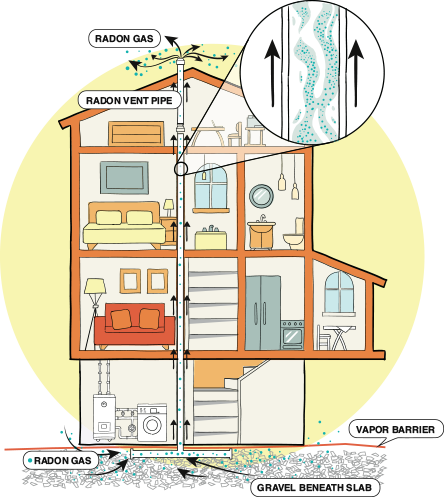How Radon-Resistant New Construction (RRNC) can Make Homes Safer and Save Money
Radon is a naturally occurring radioactive gas that forms when uranium breaks down in soil, rock, and water. Uranium often is found in high concentrations in soils sitting on granite bedrock, which are common in middle and northern Georgia counties; however, radon may be found in other areas in Georgia.

This naturally occurring radioactive gas is the leading cause of lung cancer in nonsmokers and the second leading cause of lung cancer overall. The EPA recommends mitigating a home for radon that averages above 4 picocuries per liter (pCi/L), and also recommends considering mitigation if the home average is between 2 and 4 pCi/L.
As radon is released into the soil, it can enter a building through the foundation, become trapped inside, and concentrate to dangerous levels. You don’t know it is there because it is colorless, odorless, and tasteless. Radon can be found all over the United States.
Indoor radon levels can be reduced in new homes by installing features during construction. Radon resistant new construction (RRNC) methods can effectively improve indoor air quality and reduce radon entry into buildings.
What are the Benefits of Building a Radon Resistant Home?

- It reduces a family’s risk of lung cancer.
- It’s easier and less costly to include features during construction.
- Features are incorporated into the home design and improve aesthetics compared to installing a radon mitigation system after construction.
- It will improve the indoor air quality and reduce moisture levels.
- A passive system is easy to activate if needed.
- It may add to the resale value of your home.
Can a Radon Problem be Predicted Prior to Construction?
It isn’t possible to predict if a home will have elevated radon levels before it is finished and occupied. Soil testing at the building site is expensive and cannot reliably forecast how much radon will enter the home.
What Makes a Home Radon Resistant?
Homes are built on different types of foundations. The most common types are basement, crawl space, and slab-on-grade. Some homes may have a combination of foundation types. The foundation determines the type of mitigation system installed. Homes built using radon-resistant construction techniques rely on passive radon control. This type of system doesn’t require energy or fans to move air, but an electric-powered fan can be added (activated) later if the passive system does not sufficiently reduce radon levels on its own.
Steps to Build Radon Out of Your Home
There are six basic steps to building a radon resistant home:

- Gas-permeable layer. To allow soil gas to move underneath the house, a 4-in. layer of clean gravel is placed beneath the slab. An alternative option is to install a loop of perforated pipe or a soil-gas collection mat.
- Plastic sheeting. To help keep soil gas from entering the home, polyethylene sheeting is placed on top of the gas-permeable layer.
- Vent pipe. A 3- or 4-in. PVC or other gas-tight venting pipe is installed to vent the radon (and other soil gases) above the house. The pipe starts in the gravel layer and ends above the roof line. The pipe must connect each separated footing area under the slab. The pipe goes through the warm indoor spaces, creating a draft by natural stack effect.
- Junction box and fan. An electrical junction box is installed in the attic so a fan can be added if the system needs to be activated.
- Sealing and caulking. Openings in the concrete foundation are sealed to keep soil gas from entering.
- Testing the home. A radon resistant home must be tested for radon after it is built to determine if the system needs to be activated to further reduce radon levels in the home.
Living in a Home With a Radon Reduction System
All homes should be tested every 2 years, even if there is an active radon reduction system.
For more information, visit the UGA Radon Education Program website: radon.uga.edu
The UGA Radon Education Program is funded by the U.S. Environmental Protection Agency State Indoor Radon Grant Program.
Status and Revision History
Published on Nov 03, 2023


























































